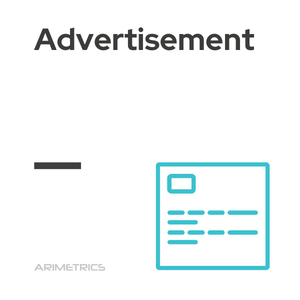
Definition:
An advertisement is any persuasive advertisement or message placed in the media with a time or space paid for or donated by an identified person, company or organization.
The announcements come almost hand in hand with the birth of commerce. Already in the past, Egyptians used papyrus to make sales messages and posters on the walls. In the ruins of Pompeii and in Arabia, commercial messages and samples of political campaigns have been found. Also on papyrus, it was common to find such messages in ancient Greece and Rome. A wall or rock painted with commercial messages is another manifestation of an ancient form of advertising, although present today in many parts of Asia, Africa and South America.
Ad objectives
The purpose of an advertisement is to convince customers of the target audience that a company’s services or products are the best, enhance the company’s image, signal and create a need for products or services, demonstrate new uses for established products, announce new products and programs, reinforce marketers’ messages, attract customers to the company and retain existing customers.
Ad platforms
Virtually any medium can be used to make an advertisement. Anywhere, if a sponsor pays to deliver their message through a medium, it’s known as advertising.
Commercial advertising media can include wall paintings, billboards, street furniture components, printed brochures and advertising cards, radio, film and television commercials, web banners and pop-ups, mobile phone screens, aircraft advertising, “human advertisements”, magazines, newspapers, criers, public and private transport, shows, metro and train platforms…
One of the most common forms of advertising in Digital Marketing are ads on Google. These ads are displayed both in the search results of the search engine, and in its Display network.
Evolution of advertising and advertisements
Advertising has evolved considerably over the centuries, adapting to technological and cultural changes. With the invention of the printing press in the 15th century, advertisements began to appear in the form of printed brochures and posters. The advent of radio and television in the 20th century transformed advertising by allowing messages to reach mass audiences audibly and visually. Today, the rise of the Internet and social media has revolutionized the world of advertising, allowing for more precise audience segmentation and an unprecedented level of interaction. This evolution continues, with emerging technologies such as artificial intelligence and augmented reality promising to push advertising to new frontiers.
Impact of advertisements on society
Advertising has a significant impact on society, influencing purchasing decisions and shaping cultural trends. Although its primary purpose is commercial, advertising can also educate the public about important issues, such as health, safety and the environment. However, it also faces criticism for promoting consumerism, perpetuating stereotypes and, in some cases, disseminating misleading information. It is therefore important that advertising companies and agencies act ethically and responsibly, ensuring that their messages are truthful and respectful of cultural and social diversity.
